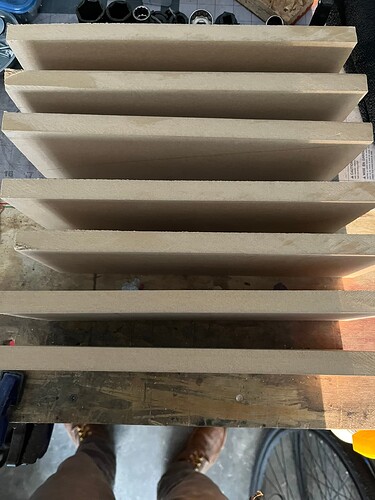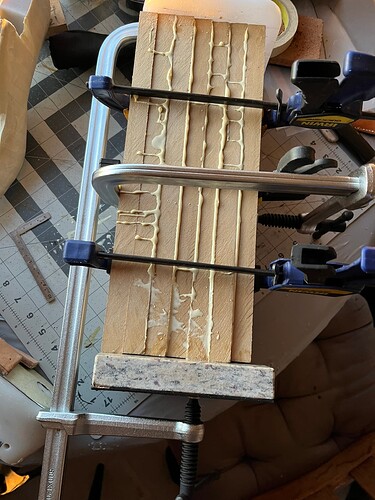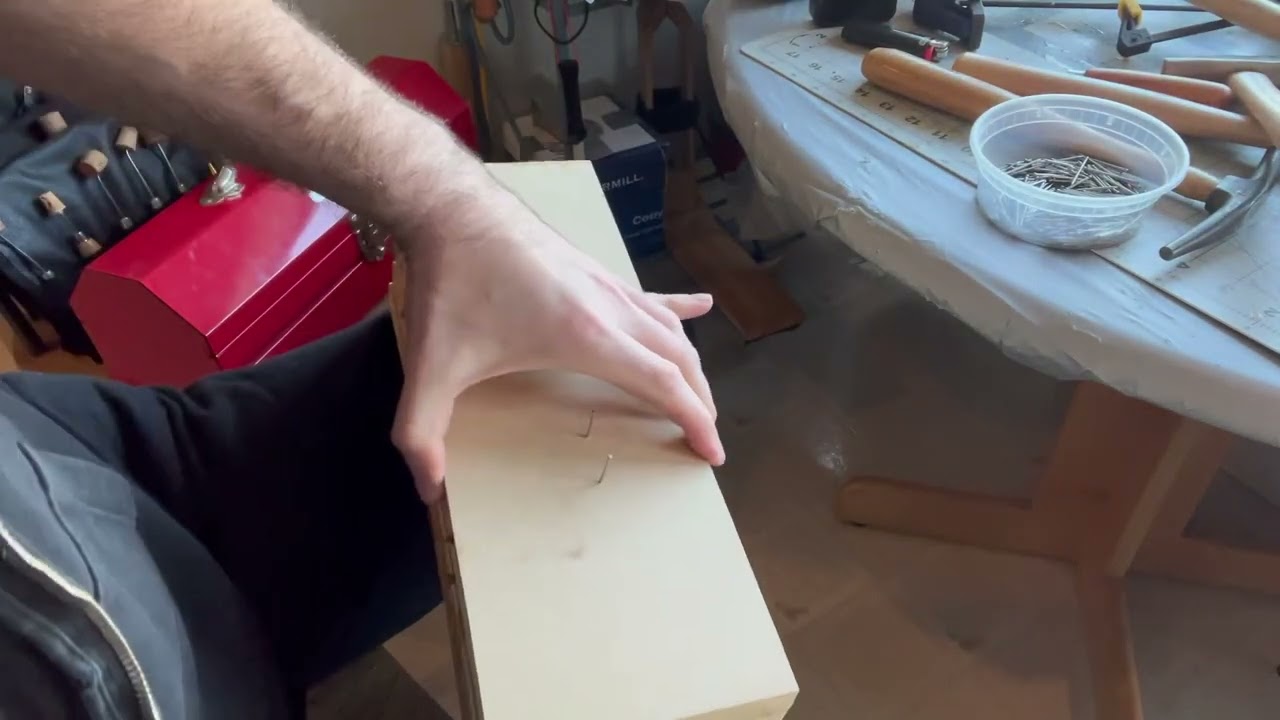No word back from Atlas Ortho on when I might get the rest of the meltable rubber I was hoping to use to cast my first pair of original lasts. So I’m on to plan two: buy a sheet of medium-density fiberboard, cut it into planks, and glue those planks together to make solid blocks big enough carve lasts out of.
I decided to keep things a bit simple for my first go, making rectangular blocks rather than cutting shapes that look like side profiles of a rough turn. This will mean more waste, both in cutting up the MDF sheet and carving later. But I didn’t have much time, I’m trying to take it easy recovering from a disc bulge in my spine, a Skilsaw is one of the few power tools I own. No reciprocating saw.
Part of this was also just figuring out costs and available products, so I went for blocks designed accommodate pretty much any size shoe last. Based on the Brannock measurements for a size 15EE, plus some allowances and rounding, I ended up cutting 15×5×5″ planks out of 3/4″ MDF. Glued up in stacks of 7, that makes 15×5¼×5″ blocks.
2×4′ sheets of MDF cost a tad less than $30 at my local Home Depot in Emeryville, California this week. It’s certainly cheaper to buy larger. I also have a local lumber yard a bit closer that I prefer to deal with. But I wanted to make sure it was possible to get two big enough laminated blocks out of one the smaller sheets the Big Box sells. I have an older Tacoma without a huge bed, and I expect many others have car trunks or other limited hauling space. Home Depot knows their market, and I wanted to give it a go.
My cutting plan wasn’t terribly thought through. It may be possible to do better.
My sheet measure a little over 2″ wide, so I first ripped 15″inch from one edge, yielding a larger piece 15″×4′ and a smaller piece which should have been 9″×4′, but was actually right about 10″×4. I then crosscut the larger piece at 5″ intervals. I ripped the smaller piece in half, at roughly 5″, and then crosscut the resulting long strips into 15×5″ planks. There were waste pieces at the ends of both original pieces.
I used a Skilsaw with a framing blade for my cuts. Fair warning if you haven’t done this before: MDF throws up a lot of fine dust. Seriously consider adding a respirator to your usual eye and hand protection ensemble.
I personally don’t have experience cutting MDF with a hard-point “jobsite” saw, or a Japanese pull saw. Either would clearly be a lot more work than using a powersaw. But it may also throw up a lot less dust.
I glued up with Titebond original formula and clamps. I wasn’t too particular about getting things completely square in the clamps, since I know my planks vary a bit. If I had a bandsaw, I probably would have spent more time cutting more exact planks and clamping so I ended up with three passably perpendicular sides to glue templates on.
Even so, you can see in the second photo that I grabbed a marble skiving block and cutting board as gluing cauls, to help square things up.
Of course, the uniformity of the MDF really came to play at this stage. The sheet I bought was flat, and the planks I cut from it lay right together, smoothly. This won’t necessarily be the case with sawed lumber. And there’s no moving grain direction in pulverized, resin-bound wood fiber to account for.
In the back of my mind, it’s haunting me that $30 is only about three bucks less than the cost Hormas El Árbol mentioned for lasts printed to order from .stl files. Shipping costs from Mexico are the huge catch there, but it could be the price points for local-wood and digital-plastic are already on the same order of magnitude. And that’s ignoring time and materials like glue, clamps, saws, and so on. Computers cost more, but perhaps more would-be lastmakers have computers these days than woodworking setups.
With the resin in the MDF and then Titebond, it’s also not entirely fair to call my blocks “wood” and lasts Horma, SA de CV or El Árbol “plastic”. There will be an awful lot of polymer in the lasts I’m going to carve.


